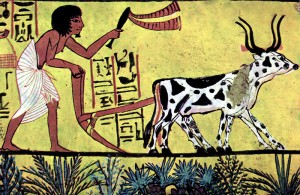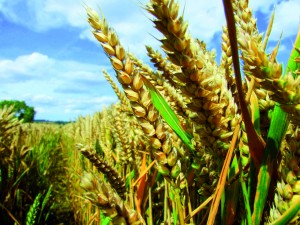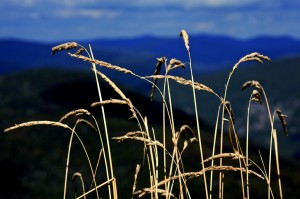MONDAY, 3 MAY 2010
The world population is predicted to reach nine billion by 2050. According to the Declaration of the World Summit on Food Security, this means we will have to increase our agricultural output by 70 per cent. Throughout history, we have consistently developed new methods and technologies in order to feed ourselves. We have developed from hunter-gatherers into societies dependent on agriculture. Farming practices have been further advanced by the mechanisation of techniques, and we now have the ability to create designer crops to suit our needs.The disadvantages of a hunter-gatherer lifestyle seem clear to us today but in reality, the pioneers of farming had things equally tough. Early farmers had shorter life expectancies than their hunter-gatherer contemporaries. The practice of agriculture spread gradually as it became more favourable to expend energy cultivating crops, which yielded more predictable food supplies than hunting.
According to Jared Diamond in his book Guns, Germs and Steel there are five locations where plant domestication originated independently: the Fertile Crescent in Southwest Asia, China, Mesoamerica, the Andes and Amazonia, and the Eastern United States. The reason agriculture originated in each case was due to the particular plant species present. Many plants either do not produce edible fruit, or are woody and have small yields. Conversely, annual plants, which live for only one year, put most of their energy into making large seeds (which we can eat) and invest little in woody stems, making them much better potential crops. Moreover, the seeds are adapted to surviving the long dry season before germination and so can be stored for long periods. The annuals of the Fertile Crescent were highly abundant and suitable for cultivation, meaning the area boasts some of the earliest examples of domesticated plants, dated at 8500BC.
Through cultivation we became more aware of variation between different plant populations. Selective breeding was employed to ensure that crops had those traits most desirable to humans, presumably focusing on higher yields or edibility. Wild almond seeds, for example, produce highly toxic hydrogen cyanide when damaged in any way, including chewing, but identification of varieties containing a genetic mutation inhibiting hydrogen cyanide production allowed cultivation.
Advantageous traits may also be acquired accidentally; modern wheat is the result of crosses between several wild and domesticated varieties, which are believed to have occurred naturally on the edges of fields, before being noted for their beneficial traits and cultivated. Today, selective breeding is a highly targeted process and, though usually aimed at maximising yield, often focuses on specific traits such as drought resistance.
Empires were founded on their ability to produce food for their citizens; the Ancient Egyptians, for example, were renowned for their innovations in irrigation. Egyptian farmers harnessed the natural flooding of the Nile, digging basins that filled with floodwater that was left to saturate the earth before being drained. Little is known, however, about agriculture during the Middle Ages, though we do know that monasteries maintained farming practices, often owning large areas of land.
In the 19th century, the industrial revolution saw the dawn of mechanisation in agriculture. The steam engine replaced horses and manpower, and was itself later replaced by diesel and petrol engines.
The rising populations of Europe and America during this period had to be balanced by increased food production. Applying fertiliser meant that crops were not limited by the need for nitrogen in the soil and therefore could have higher yields. Initially, nitrogen compounds for fertilisers were obtained from sodium nitrate mined in Chile, but reserves soon began to run out. In 1911, the German chemist Fritz Haber developed a method for the synthesis of ammonia, which could itself be used to fertilise crops or oxidised into nitrate fertilisers. Carl Bosch scaled up the process to an industrial level, providing unprecedented access to fertilisers. Both men won Nobel prizes for their scientific contributions.
Advances made by the ‘Father of the Green Revolution’, Norman Borlaug, in the 20th century further increased potential wheat yields. Having bred wheat resistant to stem rust disease in Mexico, preventing an impending food crisis, he then turned his attention to the Japanese dwarf wheat, Norin-10. This contained two genes, Rht1 and Rht2, which were responsible for decreasing the height of the wheat. This allowed more energy to be allocated to grain production, so greater numbers of higher quality grains were produced. Not only did this increase the yield per area, but dwarf varieties of wheat are resistant to lodging (falling over) during wet and windy weather, which can cause large crop losses. Dwarf wheat plants could therefore take full advantage of increased fertiliser application without increased risk of damage. Similar dwarfing genes have also been bred into barley and maize.
To counter the increased application of man-made fertilisers and the introduction of industrialised intensive agriculture, the organic movement was founded. Groups formed in the 1930s and 1940s who believed that growing crops without synthetic fertilisers was a more sustainable way of farming. The movement gathered momentum with the formation of the International Federation of Organic Agriculture Movements in 1972, but the market for organic produce only began to increase rapidly in the 1990s. By 2007, the industry was valued at $46 billion. However, there are concerns that organic farming simply cannot meet the demands of our growing population.
Other camps advocate genetically modified (GM) crops as the future of agriculture. The first commercial GM crop was a tomato variety called Flavr Savr, distributed in the USA by the company Calgene. Flavr Savr tomatoes had a longer shelf life and, when bred with tastier varieties, sold at a premium supermarket price. Calgene, however, were inexperienced at shipping and growing tomatoes, and the venture went bankrupt within a few years. Zeneca engineered tomatoes for tomato paste production in the UK, but the GM backlash of the late 1990s led to the end of this project. GM crops continue to be grown in many parts of the USA and are noted for their increased resistance to disease, pests and herbicides.
Monsanto, the world’s leading producer of GM seed, has been repeatedly questioned over its environmental and ethical practices. However, a more humanitarian approach is exemplified by the production of Golden Rice, a variety developed to relieve vitamin A deficiency by providing the precursor from which the body can catalyse the vitamin. An education programme is being introduced across areas where the rice is needed to improve the project’s success. Throughout the development process, intellectual property has been shared between Zeneca, the Rockefeller Foundation and Syngenta in a way that surely should be followed in all global food initiatives.
The future of agriculture is at present uncertain. Although many advocate organic farming, restrictive regulations discourage many farmers from making the change. Public rejection of GM crops has made GM agriculture currently unviable in the UK, but with better communication and management we may see UK grown GM products back on the market soon. The most sustainable and productive option is likely to be a combination of approaches. Genetic modification could increase crop productivity without requiring fertilisers or ever-increasing areas of land. Crops must also be developed to deal with the consequences of climate change, be that making them more drought tolerant or able to take advantage of increased levels of carbon dioxide. Modelling is helping in this approach, but it is clear that if we are to meet the food needs of the world, decisions must be made quickly and with fluent communication between scientists, government and the public.
Alex Jenkin is a third year Natural Sciences Tripos student in the Department of Plant Sciences



